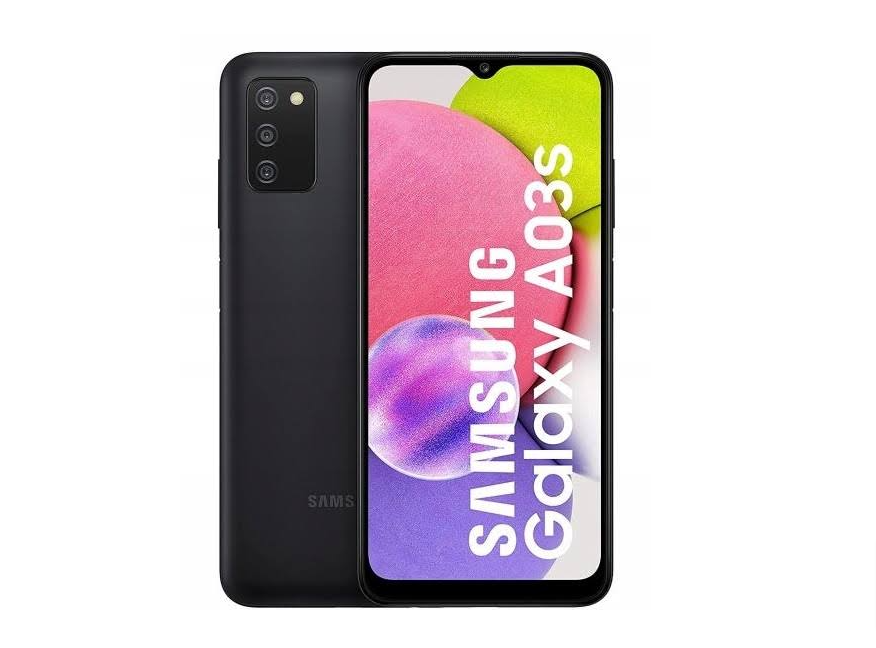What is it?
The Samsung Galaxy A03s is a budget Android smartphone, lacking 5G connectivity and with limited features. It has a 6.5-inch LCD display with low 720 x 1,600 resolution. At its heart sits a MediaTek Helio P35 chipset, coupled with just 3GB of Ram. It has a fairly restrictive 32GB of storage, of which only 15GB is available to use, although there is a micro-SD card slot to expand on this should you need more. This phone is available in black or blue.
The phone can be unlocked biometrically using face recognition or the fingerprint sensor. However, its lack of support for the faster 5GHz or Wi-Fi 6 standards makes it seem outdated. It does have near-field communication (NFC), which allows it to be used with contactless payments systems such as Android Pay.
On the back there’s a triple-lens arrangement, with a 13Mp main sensor, plus 2Mp depth and macro lenses. The front-facing selfie camera has a 5Mp resolution.
At 9.2mm it’s fairly slim and weighing 198g feels reasonably light, too. It uses a conventional 3.5mm audio jack for connecting to headphones.
What’s it like to use?
It’s a doddle to set up and the menus are laid out logically, making navigation intuitive. However, the screen has quite low resolution and contrast levels could be better. Additionally, it has a bit of a blue tint and the angle of view is very narrow. The touchscreen can also sometimes be a little slow and unresponsive.
The phone scored quite poorly in our performance tests and is likely to be sluggish when used for anything more than basic everyday tasks.
Call quality is good in quiet locations and it deals fairly well in situations when there is increased background noise. However, the sound from the mono speaker lacks bass and is unnatural and harsh.
How long does the battery last?
Its 5000mAh battery lasted 34 hours at maximum brightness in our tests, although you can push this to 39 hours if you darken the screen a little – which is reasonable.
The 7.8-Watt charger takes a lengthy four hours to fully replenish a flat battery, which is awful compared to rivals. This model does not support wireless charging.
How good are the cameras?
Disappointing. The rear cameras deliver below-par results. Results aren’t too bad in daylight, with good colour balance, reasonable detail and acceptable contrast. But move to lower light and images come across as dark, blurred and coarse, with muted colours. Alternatively, turn on the flash and you’ll get better-exposed shots with improved colours, although they’ll still look a little flat and grainy.
Images from the front selfie camera aren’t great, appearing over-sharpened, with unnatural colours and skin tones. In lower light they are blurred, grainy and pale. Using the flash helps a little but blurring and an uneven level of sharpness are still a problem.
Rear-lens videos could be better as they show odd colour shifts and hard levels of contrast. Image stabilisation is also poor. Front camera videos also suffer from the same shortcomings, while appearing tinted and grainy.
Is there anything I should know?
This model has no formal IP water-resistance rating but passed our rainfall test. It also survived our drop tests and the screen doesn’t scratch easily, so this is a robust phone that shouldn’t damage easily.
Should I buy it?
No. This is a poor phone, with limited, outdated features and disappointing cameras. Take a look at our Which? Best Buys instead.





